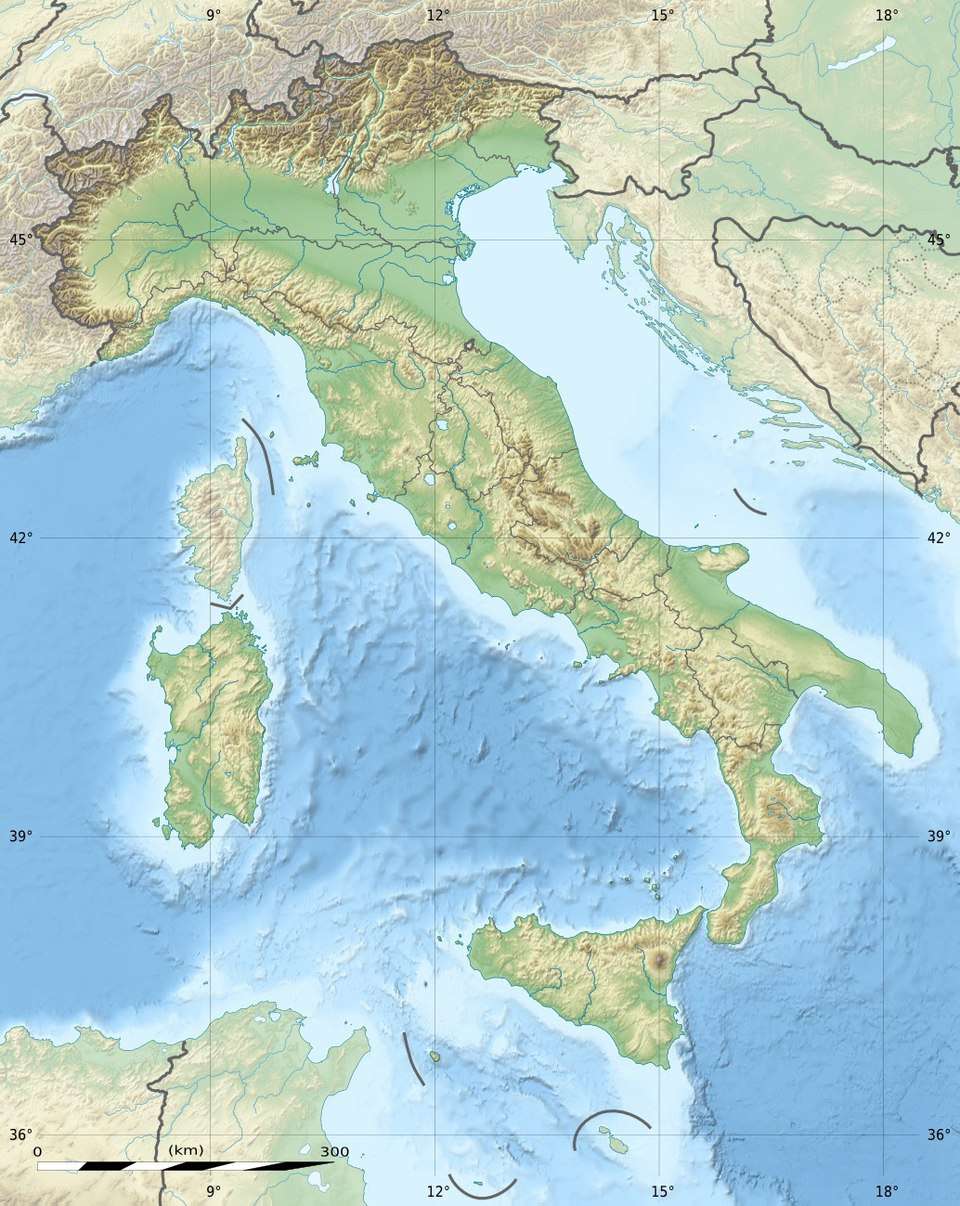Livorno Lighthouse (Fanale dei Pisani)
|
Fanale dei Pisani | |
 Fanale dei Pisani Tuscany  Fanale dei Pisani Fanale dei Pisani (Italy) | |
| Location |
Livorno Tuscany Italy |
|---|---|
| Coordinates | 43°32′38″N 10°17′41″E / 43.543778°N 10.294861°ECoordinates: 43°32′38″N 10°17′41″E / 43.543778°N 10.294861°E |
| Year first constructed |
1154 (first) 1303 (second) |
| Year first lit | 1954 (current rebuilt) |
| Automated | yes |
| Deactivated | 1944-1956 (destroyed by Germans) |
| Foundation | octagonal prism basement |
| Construction | stone and concrete tower |
| Tower shape | two-stage cylindrical tower with balcony and lantern |
| Markings / pattern | unpainted gray stone, white lantern, gray metallic dome |
| Height | 53 metres (174 ft) |
| Focal height | 52 metres (171 ft) |
| Light source | mains power |
| Range |
main: 24 nautical miles (44 km; 28 mi) reserve: 18 nautical miles (33 km; 21 mi) |
| Characteristic | Fl (4) W 20s. |
| Racon |
LI |
| Admiralty number | E1356 |
| NGA number | 7892 |
| ARLHS number | ITA-097 |
| Italy number | 1896 E.F[1] |
| Managing agent | Marina Militare |
Livorno Lighthouse (Italian: Faro di Livorno) is an active lighthouse in Tuscany, Italy.
History
The lighthouse is called Fanale dei Pisani, for the reason that was built by the Pisans in 1303 on project attributed to Giovanni Pisano and by the master builders Rocco Entello De Spina and Bonaggiunta Ciabatti whose names were found engraved on a stone.[2] The lighthouse was built on an emerging rock surrounded by the sea at the south entrance of the harbour; it is formed by a polygonal basement of 13 sides over which is placed the tower formed by two cylinders both with an embattled balcony and the lantern on the top. It consists of 11 floors, connected each other by a spiral staircase up to 53 meters, every floor is 3.72 meters high expect the first and the second respectively 5.55 and 4.22 meters.[3] The lower part is made of four cylinders of decreasing diameter and the upper part of three which makes thin the tower toward the summit.
The lighthouse was built employing the white Verruca stone coming from San Giuliano cave near Pisa. At first was used oil lamps for the light, then compressed oil, in 1841 was installed the Fresnel lens and was used the acetylene gas lamp; at the end of 1800s the installation was electrified.[4]Ferdinando I de' Medici, Grand Duke of Tuscany order the construction of warehouses in the basement in 1584 which were transformed in the Lazzaretto di San Rocco and a shipbuilding. In 1911 the lighthouse passed under the jurisdiction of the Italian Navy as is still.
The tower came intact until June 20, 1944 when the German troops, at the approaching of the Allied, blew up it. The Fanale was rebuilt in June 1954 according to the original project with material recovered from the ruins and from the cave; it is made by reinforced concrete 30 centimetres thick covered externally by stone. The new lighthouse was inaugurated on September 16, 1956 by President Giovanni Gronchi on the occasion of the 350th anniversary of the declaration to the status of city.[2]
See also
References
- ↑ Livorno Lighthouse Marina Militare
- 1 2 Travelitalia
- ↑ Research Gate
- ↑ Il mondo dei fari
External links
- Servizio Fari Marina Militare (in Italian)
| Wikimedia Commons has media related to Fanale dei Pisani (Livorno). |